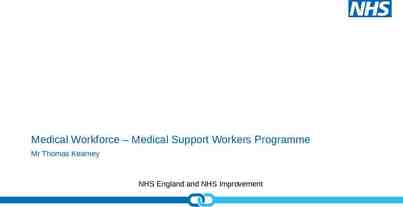EMERGENCY PREPAREDNESS
78 Slides6.68 MB

EMERGENCY PREPAREDNESS

SIGN IN SHEET Please check these for accuracy: * Address * Telephone number * Company name * E-mail address Is everything spelled correctly? Don’t forget your signature!

NAME TENT Please WRITE your name BIG (on both sides,

GENERAL OVERVIEW

BREAKROOM * Pay Phones * Message Board * Coffee * Vending Machines * Refrigerator * Can Recycling

CELL PHONES

RESTROOMS

SMOKING AREA Please respect our smoking policy

MANUAL

OCOSH LIBRARIES Library DVD and Video Library

Why are we here?

COURSE OBJECTIVES You will Learn: An all-hazard approach to emergency planning Main components of an emergency plan Structured approach to emergency preparedness planning Skills to develop a plan

WORKPLACE EMERGENCY An unforeseen situation that threatens your employees, customers, or the public, disrupts or shuts down your operations, or causes physical or environmental damage.

Imagine that a tornado strikes your community. What do you do?

Why Plan for an Emergency or Crisis? Emergencies or crises of all shapes and sizes occur on a daily basis Emergencies or crises have significant impact Physical Emotional Educational

Effective planning will reduce the level of chaos that occurs in an emergency Self-reliance: In event of a significant emergency or crisis, reaction time is essential Survival of your business entity

OSHA REQUIREMENTS

General Requirements for all Workplaces Emergency action plans (EAP) [29 CFR 1910.38] [29 CFR 1926.35] Portable fire extinguishers [29 CFR 1910.157] Fire detection systems [29 CFR 1910.164] Fixed extinguishing systems [29 CFR 1910.160] [29 CFR 1926.150] Fire prevention plans (FPP) [29 CFR 1910.39] [29 CFR 1926.151]

General Requirements for all Workplaces Design and construction requirements for exit routes [29 CFR 1910.36] Maintenance, safeguards, & operational features for exit routes [29 CFR 1910.37] Employee alarm systems [29 CFR 1910.165] Medical services & first aid [29 CFR 1910.151][29 CFR 1926.50]

TYPES OF EMERGENCIES Natural Environmental Human Engineering Technical

NATURAL Fire Tornado Flood Severe Weather Earthquake Pandemics

Fire Housekeeping (prevention) Keep clear of emergency vehicles If possible report to the designated evacuation area for your building Account for building occupants

Tornado/Flood/Severe Weather What to think about: Determine how you will be notified of a severe weather emergency Determine how you can quickly notify employees, contractors, and customers on premises Identify designated shelter area for your building

Pandemics: Influenza Annual deaths: 36,000* Hospitalizations: 200,000* * Average annual estimates during the 1990’s Who is at greatest risk for serious complications? persons 65 and older persons with chronic diseases infants pregnant women nursing home residents Stats from OHIO Department of Health

American Deaths from Influenza Compared to U.S. Servicemen Killed in any War Thousands 900 800 700 600 500 400 300 200 100 0 Civil War WWI 1918-19 Influenza WWII Korean War Vietnam War Stats from OHIO Department of Health

ENVIRONMENTAL Loss of Power Loss of Communications Hazardous Material Release Explosion

Loss of Power Identify and prioritize vital power dependent functions, operations, and equipment Plan ahead for short-term and long-term outages

Loss of Communications TELEPHONE SERVICE COMPUTERS RADIOS TELEVISION

Hazardous Material Release Notification of Release Activation of Response Plans Evacuation or Shelter in place Stay upwind of the release (evacuation) Graniteville, SC Train Wreck

Explosion Identify and prevent conditions Properly store materials Labels should be well maintained and legible

Hazard Identification Labels and placards Material Safety Data Sheets (MSDS) Shipping papers

TECHNICAL Network Failure Software Failure Viruses Machinery Failure

Network and Software Failure / Viruses Have data recovery plans Consider policies to restrict removable storage devices Up to date virus protection Firewall

Machinery Failure Backup systems for critical machinery Trained personnel to operate machinery Emergency shut-down and evacuation procedures Chernobyl 1986

HUMAN ENGINEERING Workplace Violence Sabotage/Arson Terrorism

Workplace Violence Create and enforce policy Site security Documentation

Sabotage/Arson Visitors log Closed circuit video Procedure to report suspicious behavior

Terrorism Seven Signs of Terrorism (know them): Surveillance Elicitation Tests of Security Acquiring Supplies Suspicious People Dry Runs Getting into Position

BREAK TIME

Categorize Business Processes THERE ARE 3 LEVELS OF TOLERANCE: NECESSARY – function cannot be replaced by manual method SIGNIFICANT – function can be performed manually for a “brief” period of time MINOR – function can be interrupted for an extended period of time Tolerance - ability to cope with the interruption expressed in: length of interruption, time of day, time of the year

Identifying and Prioritizing 1. WHO DO YOU GET THE INFORMATION FROM? 2. ASK THE RIGHT QUESTIONS How would you keep that task going if interrupted for 8 hours, 24 hours, or 3 days?

How Will Your Business Survive? After a business interruption? If property damage occurs? At a remote location ? Loss of employees?

Risk Probability Chart Risk Probability Chart Emergency Event Probability ( ) Human Impact ( ) Property Impact ( ) Business Impact ( ) Internal/External Resources (-) Total risk ( ) 1 to 10 Exa mpl e 1 to 10 1 to 10 1 to 10 1 to 10 (subtract) and P ra Exe ctice C rc i s e Ta harts a b re 0 to 39 in

Risk Probability Chart Emergency event Probability Human impact Property impact Business impact Internal/External resources

Risk Probability Chart

START THE PLAN: Emergency Response Plans ERP

Writing Your Plan Develop a checklist before you start the plan Mission Statement / Goals / Objectives Define types of emergency Emergency response plan Facilities / Property layout maps

Writing Your Plan (con’t) Employee contact information Important contacts: OSHA, police, fire, etc. Aid agreements with outside sources Insurance policy/asset list Media relations Alternate facility

Vehicles Controlling all access points Vehicle inspection before access to the property Prevention of abandoned or suspicious vehicles Parked / Unfamiliar vehicles

Site Security and Control Boundary control measures (fences, security cameras and scheduled patrols) Control of all entry points within the facility

Emergency Evacuation Routes Have multiple evacuation routes Primary and Secondary Mark evacuation routes (Signage)

Suspicious Behaviors Be Aware of and Report: People in buildings or areas who do not appear to be conducting legitimate business (loitering, etc.) Unauthorized personnel in restricted, sensitive or private areas Persons requesting sensitive information

Workplace Emergency Reporting and Alerting Employees Employees must know how to report emergencies "911" if applicable Local EMS numbers Appropriate internal reporting procedures

Vital Records: Protection and Retention Personnel information Financial Client Essential data

Building Safety Inspection after an emergency

FOUR ELEMENTS OF AN EMERGENCY RESPONSE PLAN

Element #1 Prevention Identify risks/vulnerabilities Implement preventive measures Assess needs and resources Identify stakeholders

Element #2 Preparedness Work with community partners to develop appropriate emergency management policies and procedures Clarify roles and responsibilities Provide training Conduct drills and exercises

Element #3 Response Activate plan Follow the leader Document actions Debriefing

Element #4 Recovery Mental Health/Emotional Recovery Recognize that recovery is an ongoing process Emphasize the importance of appropriate interventions Business recovery

FOUR GOALS OF AN EMERGENCY RESPONSE PLAN 1)Save Lives 2)Prevent Injuries 3)Protect Property 4)Protect the Environment

In addition to being able to recognize what has already happened in an emergency, it is necessary to identify the potential for other problems.

OSHA WEBSITE U.S. Department of Labor Occupational Safety & Health Administration www.osha.gov MyOSHA [ skip navigat ion al links] Search Advanced Search I ndex Safety and Health Topics Safety and Health Topics Emergency Preparedness and Response "Worker safety and health is a critical element of our nation's domestic preparedness and emergency response efforts." - J ohn Henshaw Specialty topics include, Chemical, Biological, Bioterrorism, Radiation, Personal Protective Equipment, Training and Education, S afety Equipment. I n Focus What's New OSHA eTools The following questions link to resources that provide safety and health information relevant to Emergency Preparedness and Response materials in the workplace. What standards apply? OSHA Standards Preambles to OSHA S tandards Directives More What tools are available for Responders? First Responders First Receivers Skilled Support Personnel Safety Officers More What tools are available for General Worksites? Emergency Action Plans Evacuation Matrix Fire/ Explosion Matrix ReadyBusiness More How does OSHA support the National Response System? Worker S&H Annex NRP NEMP I nside the Green Line More Where can I find additional information? DHS DOL White House CDC/ NI OSH NI C USPS More I n Focus What's New A-Z Emergency Preparedness and Response Standards Responders General Worksites National Response System Additional Assistance Credits

OSHA’S E-TOOL eTools Home : Evacuation Plans and Procedures Viewing / Printing I nstructions Credits OSHA's Expert System - Emergency Action Plan START OVER EXI T I ntroduction to the Emergency Action Plan Expert System Disclaimer An emergency action plan (EAP) is a written document required by particular OSHA standards. The purpose of an EAP is to facilitate and organize employer and employee actions during workplace emergencies. The elements of the plan must include, but are not limited to: Evacuation procedures and emergency escape route assignments. Procedures to be followed by employees who remain to operate critical plant operations before they evacuate. Procedures to account for all employees after an emergency evacuation has been completed. Rescue and medical duties for those employees who are to perform them. Means of reporting fires and other emergencies. Names or job titles of persons who can be contacted for further information or explanation of duties under the plan. This expert system will help you to create a simple EAP. This basic plan will be adequate for needs of many small and medium- sized entities. This basic plan may not be adequate for large establishments or those with more significant hazards. Users in such establishments should consider the special characteristics of their workplaces. Users can supplement this basic plan to address any situations that require special attention. Most small and medium- sized entities will get their basic plans from this system in 10 to 15 minutes. Please remember that this system does not save the plan it helps you to write, so you should save and/ or print your plan when it is completed. This OSHA Expert only provides information based on Federal OSHA Emergency Action Plan requirements. I f you are covered by a state OSHA plan you may need to contact your local state OSHA office. Please visit the OSHA Expert User Guide to obtain further instruction. Workplace Evaluation Emergency Action Plan Expert Systems Additional Assistance Site Map

WORSE CASE SCENARIO Class Exercise You are the president / CEO of a business that sells food service supplies. Your company has 25 full time employees. The company is located within a business park. There are a wide range of industries within the park. You hear that a fire has started at a business that is located near your facility. You immediately send someone over to where the emergency has occurred. The employee returns and informs you the local response authorities have ordered a shelter in place. The shelter includes all of the business park along with other near by residential and business properties. Why do you need shelter in place? You have just received a call from the Emergency Management office. They communicated to you that until further notice all businesses should be “Shelter in Place” The facility where the emergency is located manufactures Pool Chemicals. You find out that some Chlorine has escaped from their large above ground tank farm. The building has caught fire and other chemicals (such as corrosives and oxidizers) are involved in the emergency. The company where the emergency has occurred is close to your boundary line. The day is cloudy with a slight breeze to the south. You have noticed the flag is blowing to the south where your company entrance is located. Why would this emergency concern you? Your response plans include fire and weather related emergencies. Your company has food shipments to get to the customers. Should your response plans just include emergencies that happen at your facility? Why is important to understand and plan for other types of emergencies? Why is important to understand what neighborhood businesses could encounter? What agencies can you use to help find out critical information about companies within the community?

WORSE CASE SCENARIOS Students read scenarios in groups and discuss amongst themselves “what went wrong” and “what could have been in the plan” to have helped during emergency

BREAK TIME

SELLING TO MANAGEMENT

SELLING TO MANAGEMENT Address the risks and exposures without a recovery plan Cost analysis Presentation

Address the Risks and Exposures Present risk analysis Tolerance of unplanned business interruption Additional benefits Legal requirements/OSHA

Cost Analysis Monetary value of tolerance levels Customer satisfaction Sales or services lost Media relations Legal obligations

Presentation Prior to meeting, disseminate plan for management review Refer to risk and cost analysis Focus on benefits Be prepared for questions

TESTING AND REVISING YOUR PLAN Rehearsals – it is not testing your plan during an emergency. Have a specified time period to have drills (every quarter/twice a year) Audits – how did the rehearsal go? Also, monthly hazard checks (exit signs/alarms) Evolving plan – revising your plan as your business changes (new warehouse or addition to building)

Pre-Planning /Testing your Plan Activate all aspects of the plan by using Table top or Hands-on Scenarios: Practice, Practice, Practice Invite other local, regional or state organizations to participate in the training exercise Always De-brief the training exercise Use continuous improvement methods

Plan Testing Chart Drill Title Date Scheduled Date Completed Purpose of Exercise Planning Event Management Orientation & Review Employee Orientation & Review Contractor Orientation & Review Community Orientation & Review Management Table Top Ex. Response Team Table Top Ex. Walk-through Drill Functional Drill Evacuation Drill Full Scale Exercise Review & Evaluation Internal Resources External Resources Drill Control Resources Media Interest Community Interest Jan Feb Mar Apr May Jun Jul Aug Sep Oct Nov Dec

SUMMARY There is no one-size-fits-all approach to emergency response Training and practice are essential for the successful implementation of crisis response plans All employees should be trained on appropriate crisis response policies and procedures Emergency management occurs at multiple levels – business, local, federal, and personal

QUESTIONS?







